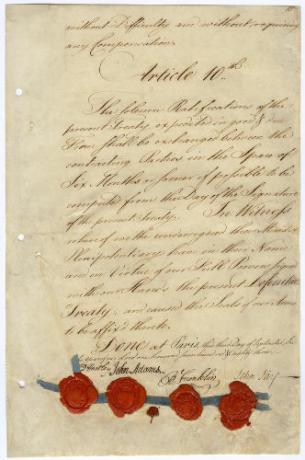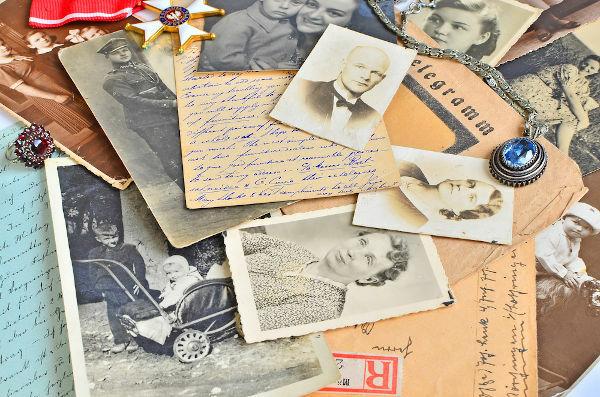At sourceshistorical they are the material and immaterial items (or their remains) that are produced by human action. Historical sources are fundamental for the historian to carry out his work of investigating the human past.
Historians currently understand that everything that is produced by human beings can be considered a historical source, therefore, not only the written text should be understood as such. Thus, paintings, sculptures, constructions, photos, videos and oral reports are also useful for the historian. Sources can be direct, that is, made by contemporaries, or indirect, produced by consulting direct sources.
Accessalso: Prehistoric art - an important historical source for historians
Understanding historical sources

A historian has the role of production of knowledge related to the events of humanity's past, and this knowledge is fundamental because it allows human beings to understand their own reality based on that past. This work is done through the study and analysis of the traces left by humans from other times, and the analysis of these traces is carried out by methods developed to assist in the construction of the knowledge.
Those traces of the past analyzed by the historian are what we know as historical sources, also called documentshistories. In the words of historian José D'Assunção Barros, historical sources are material items and immaterials or traces of them that help the historian to build an understanding of the past human|1|, because, as defended by Marc Bloch, "everything man says or writes, everything he manufactures, everything he touches can and should inform about him"|2|.
When we talk about sources materials, we are talking about trace elementsconcrete produced by human hands, such as texts, paintings, photos, films, clothes, constructions etc. In the case of sources immaterials, we are talking directly about testimonials obtained from people who lived a certain historical event or even from legends and stories that are part of oral culture of a people.

Until the nineteenth century, historians believed that the only type of document valid for the construction of historical knowledge was the writing, especially the one produced by the official means, the State, the authorities and the great men. This notion was being undone from the 20th century onwards, when new studies showed that it is possible to build historical knowledge based on other sources.
Thus, the written document continued to be an important historical source, but its use expanded. Not only the official document was considered, but also personal letters, diaries, travel reports, works of literature, for example, began to be seen as historical sources.
Other sources began to be used by historians in investigating the past. As a result, archaeological remains, such as objects, buildings, clothing, paintings, photos, video recordings, films, music, oral testimonies, etc., were also used by them.
During this process of diversification of sources, historians also began a greater dialogue with other areas of knowledge, so what was produced by areas such as psychology, anthropology and archeology, for example, began to be used in the work of analyzing historical sources.
Historians classify historical sources as volunteers and involuntary. In this sense, there are sources and historical documents designed and purposefully constructed to record certain events for posterity, while other sources were not necessarily thought of as records for the men of the future.
Historian Marc Bloch claims that it is the second category (involuntary historical sources) that is generally most trusted by historians, since, as they are not deliberately legacies, it has very important details for the investigation historic. He also exemplifies by pointing out that secret documents produced by governments, in the period 1938 and 1939, say much more about the events of that time than the newspapers of the period|3|.
This, however, does not mean that such sources should be overlooked, but that there are historical sources that have much more valuable information than others. Therefore, the research work of the historian does not cease, as the more sources that are found, the better the interpretation produced by this professional will be.
readmore: Hans Staden's report helps to understand the life of indigenous people in 16th century Brazil
Types of Historical Sources

As we have seen, historians today make use of a series of documentary sources, and this use enriches the knowledge produced. There are different types of historical sources, and José D'Assunção Barros organizes them into four, which are|1|:
- Documentstextual: official documents, personal and governmental letters, diaries, travel reports, chronicles, literary books, court proceedings, newspapers, etc.
- Archaeological remains and sources of material culture: refer to items rescued by archeology, such as buildings, streets, statues, funerary objects, clothing, ceramic pieces, etc. Other more modern items that have not been rescued by archeology also fit in here.
- pictorial representations: paintings, photos, frescoes, paintings rocks, cartoons etc.
- Recordsoral: personal testimonies and myths transmitted orally from generation to generation.
There is also a classification to differentiate the types of sources produced at the time of events from those produced in posterity, based on ancient accounts. So there are sources primaries and secondary. These terms, however, are falling into disuse and becoming better known as sourcesdirect and sourcesindirect. Therefore:
- Sourcesdirect: produced by people at the same time as the recorded events.
- Sourcesindirect: produced based on reports and traces of the time, therefore, indirect sources are built through direct sources.
Exemplifying this issue, in the study of Black Plague, we can consider Giovanni Boccaccio's account as a primary (or direct) source because he lived in Florence, Italy, during the Black Death of the 15th century and therefore witnessed what happened during that pandemic. Now, if we are going to study the Black Death based on the studies of modern historians such as Jacques Le Goff, we will be making use of secondary (or indirect) sources.
Accessalso: Anne Frank - young Dutch woman who has her diary as a source of the Holocaust
Examples of historical sources
Now that we have expanded our knowledge of historical sources a little, we can see some examples of them. Let's see the following report:
The so-called Old Saxons have no king, but a large number of chiefs placed at the head of their nation. In case of imminent war, there was a lottery with the same criteria for everyone; and whoever luck favored, was followed as a general all the time of war; they obeyed him, but when the war ended, all the chiefs became equal in power again.|4|.
This account of the Saxon chiefs — a germanic people which settled in the Brittany region and in other parts of Continental Europe—was written by Bede the Venerable, an Anglo-Saxon monk who lived in Britain from the seventh to the eighth century. The report speaks of the ealdseaxe, the Saxons who inhabited Continental Europe, and can be considered a sourcedocumentary because it was registered in the book Church history of the English people.

As an example of sourcepictographic, we can consider a woodcut produced by Benjamin Franklin in the eighteenth century. This woodcut had the writing "join, or die", which, in a free translation, means “join, or die”, and expressed Franklin's intention to unite the english colonies against the French in North America.
Therefore, it can be used in the analysis of a given context of the story of the Thirteen Colonies that refers to the Franco-Indigenous War. Later, this woodcut became a symbol used in american revolution and on American Civil War.
![Cretan palaces and frescoes are important archaeological sources for historians devoted to Greek history.[1]](/f/2929bdeb54266ab81da5b061c55df95c.jpg)
As to sourcesarcheological, we can use as an example the traces of Minoan civilization (or Cretan civilization) found by archaeologists at the turn of the 19th to the 20th century. Among these traces are a series of frescoes, that is, paintings that were made on the walls of palaces. These frescoes served as a basis for historians to understand a little about the culture and life of the Cretans. The Palace of Knossos is one of the most famous archaeological sites of this civilization.
Grades
|1| BARROS, José D’Asunção. historical sources: revisiting some key aspects for Historical Research. To access, click on here.
|2| BLOCH, Marc. Apology of History or the Office of the Historian. Rio de Janeiro: Zahar, 2001. P. 79.
|3| Idem, p. 76-77.
|4| BRICKLAYER-SÁNCHEZ, Maria Guadalupe. History of the Middle Ages: texts and testimonies. São Paulo: Unesp, 2000. P. 32.
Image credits
[1] Pecold and Shutterstock
By Daniel Neves
History teacher
Source: Brazil School - https://brasilescola.uol.com.br/o-que-e/historia/o-que-sao-fontes-historicas.htm
